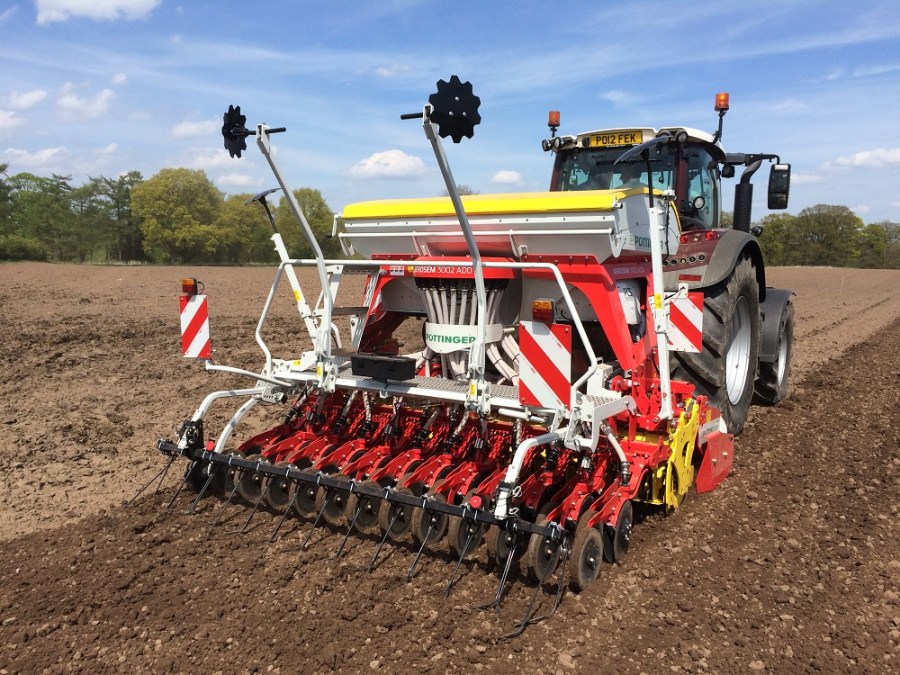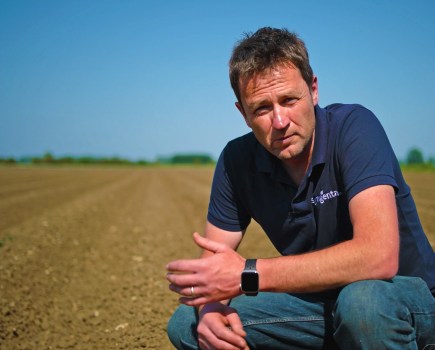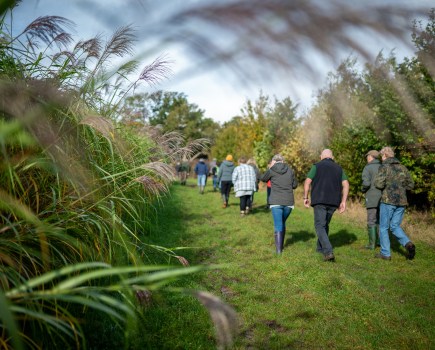Close to 50 farmers attended an Agrovista field day at Reaseheath College last week to see the results from a range of maize and cover crop trials.
The research could offer maize growers some crucial options to reduce soil erosion and nutrient run off post-harvest, as well as curtailing herbicide loss into watercourses. See full article here.
“Maize is regarded as a high-risk crop by the water industry,” explains Agrovista Agronomist, John Ball. “Establishing a green cover crop to reduce the area of exposed soil is a valuable tool for the future by many advisors and organisations, including the Maize Growers Association.”
John Ball has been working with Phil Campion, Reaseheath College and drill manufacturer, Pottinger UK to evaluate a range of grass-dominant cover crop mixes.
“What’s proved so valuable about these trials is that all the maize and cover crop seed has been drilled in a single pass using the Pottinger Aerosem with its Precision Combi Seeding system,” Mr Ball says. “The undersown cover crop leaves behind a grass-based ley that can be used for grazing immediately after the maize harvest thereby alleviating the pressure and time lag of establishing the ley after maize, as well as ensuring a robust ground cover to prevent over-winter field run-off.”
He adds that the Reaseheath trials have been used to research the optimum row widths and the best cover crop mixes to minimise the competitive yield drag in the maize crop.
“Early competition can badly affect emerging maize seedlings leading to marked reduction in harvestable yield; however, the drill’s Intelligent Distribution System has enabled us to drill the maize in 75cm row widths with a 15cm gap between the maize and companion crop rows.”
The cover crop species grown in the trial include creeping red fescue, tall fescue, perennial ryegrass and a range of different hybrid ryegrasses mixed with and without clover and vetch.
On another site in Shropshire – Antony Wade’s Hilley Farm, Pentre – Agrovista has been working with Mr Wade and the Shropshire Wildlife Trust to explore the establishment of cover crops using machinery already on most farms.
“We mounted a Stocks fan jet seeder box onto a 6m grass rake, removing tines to allow us to work between the maize rows,” he explains. “We’ve replicated this work at Reaseheath and it is showing some very promising results both in terms of establishment and drilling date flexibility.”
Agrovista will be continuing these research trials at the same sites in 2017 and will host further open days for interested farmers and advisors.




